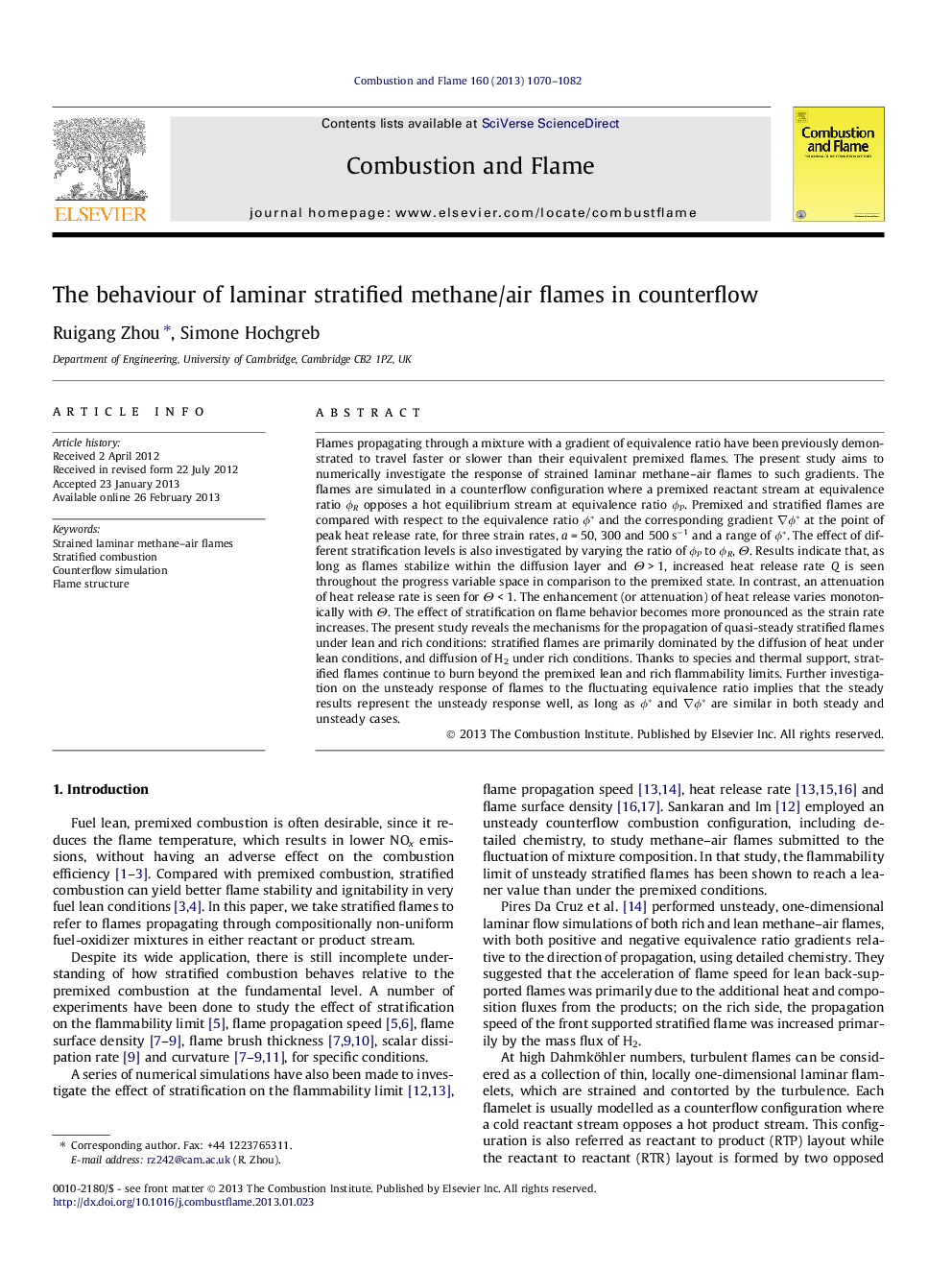| Article ID | Journal | Published Year | Pages | File Type |
|---|---|---|---|---|
| 169198 | Combustion and Flame | 2013 | 13 Pages |
Flames propagating through a mixture with a gradient of equivalence ratio have been previously demonstrated to travel faster or slower than their equivalent premixed flames. The present study aims to numerically investigate the response of strained laminar methane–air flames to such gradients. The flames are simulated in a counterflow configuration where a premixed reactant stream at equivalence ratio ϕR opposes a hot equilibrium stream at equivalence ratio ϕP. Premixed and stratified flames are compared with respect to the equivalence ratio ϕ* and the corresponding gradient ∇ϕ* at the point of peak heat release rate, for three strain rates, a = 50, 300 and 500 s−1 and a range of ϕ*. The effect of different stratification levels is also investigated by varying the ratio of ϕP to ϕR, Θ. Results indicate that, as long as flames stabilize within the diffusion layer and Θ > 1, increased heat release rate Q is seen throughout the progress variable space in comparison to the premixed state. In contrast, an attenuation of heat release rate is seen for Θ < 1. The enhancement (or attenuation) of heat release varies monotonically with Θ. The effect of stratification on flame behavior becomes more pronounced as the strain rate increases. The present study reveals the mechanisms for the propagation of quasi-steady stratified flames under lean and rich conditions: stratified flames are primarily dominated by the diffusion of heat under lean conditions, and diffusion of H2 under rich conditions. Thanks to species and thermal support, stratified flames continue to burn beyond the premixed lean and rich flammability limits. Further investigation on the unsteady response of flames to the fluctuating equivalence ratio implies that the steady results represent the unsteady response well, as long as ϕ* and ∇ϕ* are similar in both steady and unsteady cases.
